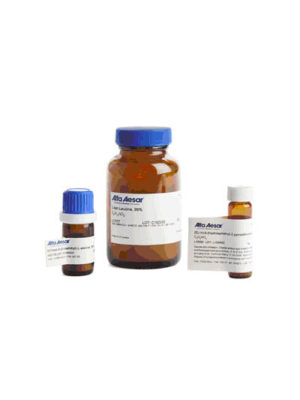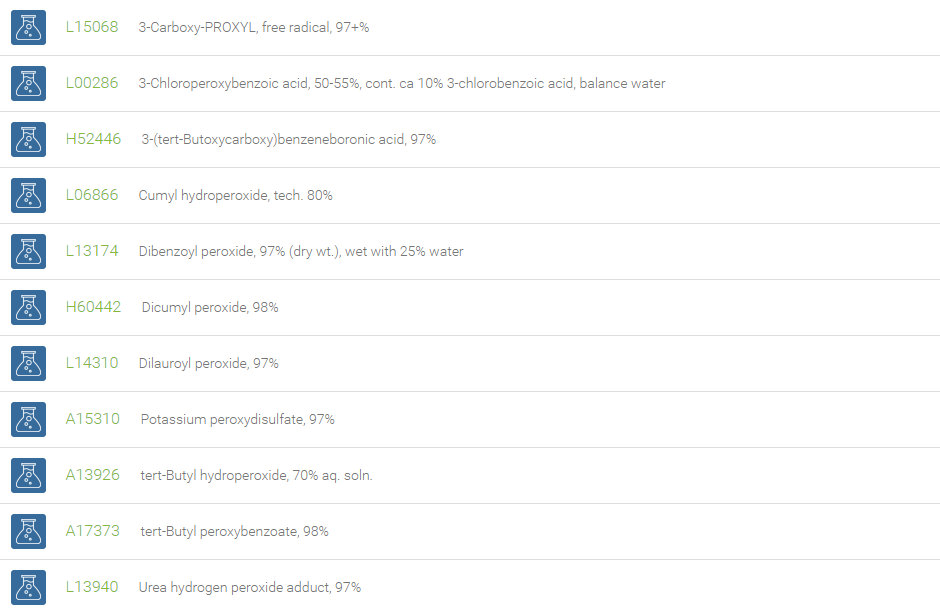Peroxy Compounds

Peroxy Compounds
The characteristic structure of peroxy compounds is the relatively weak oxygen-oxygen linkage. The weak -O-O- bond is easily split into reactive radicals via homolytic cleavage. As the active oxygen content and oxygen balance increase, the sensitivity and instability of peroxy compounds increase. Organic peroxy compounds fall in two categories, namely, peroxy acids and organic peroxides. Peroxy acids include peracetic acid, trifluoroperacetic acid, and m-chloroperbenzoic acid. Examples of organic peroxides are t-butylhydroperoxide, and dibenzoyl peroxide. Peroxy compounds find use in mouthwash, disinfectants, bleaching, rubber, and detection devices. They have the ability to kill bacteria, viruses and fungi on hard surfaces. br>
Synthesis of peroxy compounds generally involves hydrogen peroxide. In polymerization and addition reactions the peroxy compounds are used as a source of free radicals. Dibenzoyl peroxide is a well-known radical initiator employed in every laboratory. Polymers like polyethylene (plastics), polycaprolactam (Nylon) and several other polymers are manufactured with peroxy compounds. Organic peroxides, through radical polymerization, play a key role in the manufacture of acrylic and methacrylic polymers. Peracids find extensive application of industrial importance, including Prilezhaev reaction and Bayer-Villiger oxidation. Manufacture of acetone and phenol is made through cumene hydroperoxide as an intermediate. Peroxides also find application in drugs wherever formation of radicals are required.


